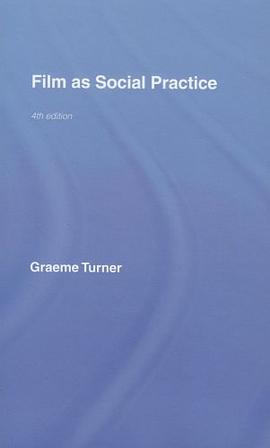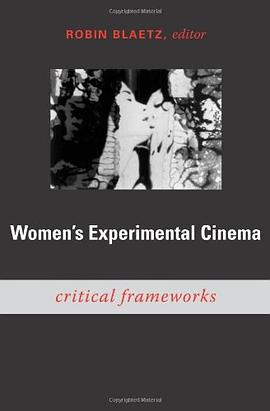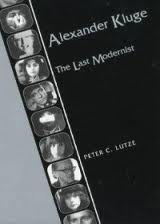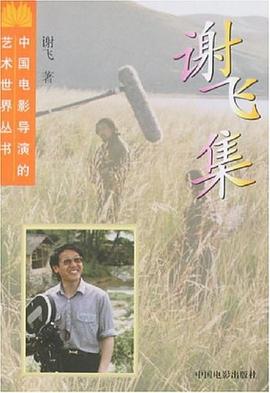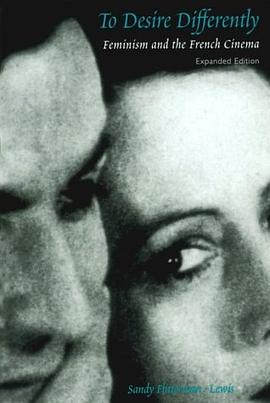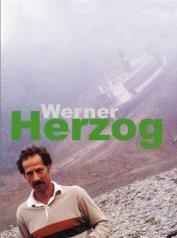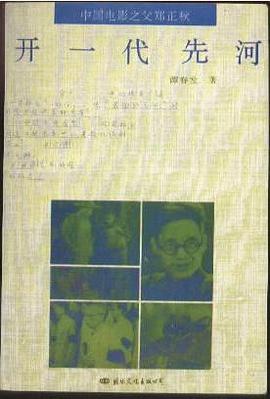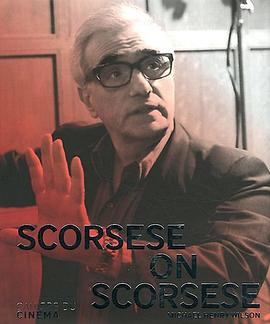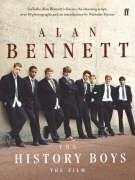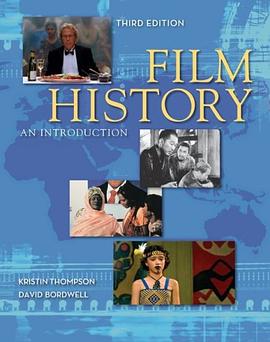

具体描述
Written by two of the leading scholars in film studies, Film History: An Introduction is a comprehensive, global survey of the medium that covers the development of every genre in film, from drama and comedy to documentary and experimental. As with the authors' bestselling Film Art: An Introduction (now in its eighth edition), concepts and events are illustrated with frame enlargements taken from the original sources, giving students more realistic points of reference than competing books that rely on publicity stills.
The third edition of Film History is thoroughly updated and includes the first comprehensive overviews of the impact of globalization and digital technology on the cinema. Any serious film scholar--professor, undergraduate, or graduate student--will want to read and keep Film History.
New Features
New final chapter, "Digital Technology and the Cinema," pulls together a wealth of recent research exploring the impact of new technology on film production, distribution, and publicity.
Revised organization splits the coverage of Latin America, the Asia-Pacific region, the Middle East, and Africa into two chapters, making the coverage of contemporary cinema in these regions more manageable.
More than 200 new film frames illustrate examples and concepts in the text providing students with more realistic points of reference, ensuring that what readers study on the page actually appears on the screen.
Updated examples and coverage throughout--particularly in Chapter 25 through 27--bring the text up to the present.
The authors' blog, Observations on film art and Film Art, includes a new essay on "Doing Film History" as well as weekly commentary on film from David Bordwell and Kristin Thompson. Visit: http://www.davidbordwell.net/blog/
作者简介
Kristin Thompson is an Honorary Fellow at the University of Wisconsin-Madison. She holds a master’s degree in film from the University of Iowa and a doctorate in film from the University of Wisconsin-Madison. She has published Eisenstein's Ivan the Terrible: A Neoformalist Analysis (Princeton University Press, 1981), Exporting Entertainment: America in the World Film Market 1907-1934 (British Film Institute, 1985), Breaking the Glass Armor: Neoformalist Film Analysis (Princeton University Press, 1988), Wooster Proposes, Jeeves Disposes, or, Le Mot Juste (James H. Heineman, 1992), Storytelling in the New Hollywood: Understanding Classical Narrative Technique (Harvard University Press, 1999), Storytelling in Film and Television (Harvard University Press, 2003), Herr Lubitsch Goes to Hollywood: German and American Film after World War I (Amsterdam University Press, 2005), and The Frodo Franchise: The Lord of the Rings and Modern Hollywood (University of California Press, 2007). She blogs with David at www.davidbordwell.net/blog. She maintains her own blog, "The Frodo Franchise," at www.kristinthompson.net/blog. In her spare time she studies Egyptology.
David Bordwell is Jacques Ledoux Professor Emeritus of Film Studies at the University of Wisconsin-Madison. He holds a master's degree and a doctorate in film from the University of Iowa. His books include The Films of Carl Theodor Dreyer (University of California Press, 1981), Narration in the Fiction Film (University of Wisconsin Press, 1985), Ozu and the Poetics of Cinema (Princeton University Press, 1988), Making Meaning: Inference and Rhetoric in the Interpretation of Cinema (Harvard University Press, 1989), The Cinema of Eisenstein (Harvard University Press, 1993), On the History of Film Style (Harvard University Press, 1997), Planet Hong Kong: Popular Cinema and the Art of Entertainment (Harvard University Press, 2000), Figures Traced in Light: On Cinematic Staging (University of California Press, 2005), The Way Hollywood Tells It: Story and Style in Modern Movies (University of California Press, 2006), and The Poetics of Cinema (Routledge, 2008). He has won a University Distinguished Teaching Award and was awarded an honorary degree by the University of Copenhagen. His we site is www.davidbordwell.net.
目录信息
Introduction: Film History and How It Is Done
Why Do We Care About Old Movies?
What do Film Historians Do?
Our Approach to Film History
History as Story
Part One: Early Cinema
1 The Invention and Early Years of the Cinema, 1880s-1904
The Invention of the Cinema
Early Filmmaking and Exhibition
2 The International Expansion of the Cinema, 1905-1912
Film Production in Europe
The Struggle for the Expanding American Film Industry
The Problem of Narrative Clarity
3 National Cinemas, Hollywood Classicism and World War I, 1913-1919
The American Takeover of World Markets
The Rise of National Cinemas
The Classical Hollywood Cinema
Small Producing Countries
Part Two: The Late Silent Era, 1919-1929
4 France in the 1920s
The French Film Industry after World War I
Major Postwar Genres
The French Impressionist Movement
The End of French Impressionism
5 Germany in the 1920s
The German Situation after World War I
Genres and Styles of German Postwar Cinema
Major Changes in the Mid- to Late 1920s
The End of the Expressionist Movement
New Objectivity
Export and Classical Style
6 Soviet Cinema in the 1920s
The Hardships of War Communism, 1918-1920
Recovery under the New Economic Policy, 1921-1924
Increased State Control and the Montage Movement, 1925-1930
Other Soviet Films
The Five-Year Plan and the End of the Montage Movement
7 The Late Silent Era in Hollywood, 1920-1928
Theater Chains and the Structure of the Industry
The Motion Picture Producers and Distributors of America
Studio Filmmaking
Films for African-American Audiences
The Animated Part of the Program
8 International Trends of the 1920s
"Film Europe"
The "International Style"
Film Experiments Outside the Mainstream Industry
Documentary Features Gain Prominence
Commercial Filmmaking Internationally
Part Three: The Development of Sound Cinema, 1926-1945
9 The Introduction of Sound
Sound in the United States
Germany Challenges Hollywood
The USSR Pursues Its Own Path to Sound
The International Adoption of Sound
10 The Hollywood Studio System, 1930-1945
The New Structure of the Film Industry
Exhibition Practice in the 1930s
Continued Innovation in Hollywood
Major Directors
Genre Innovations and Transformations
Animation and the Studio System
11 Other Studio Systems
Quota Quickies and Wartime Pressures: The British Studios
Innovation within an Industry: The Studio System of Japan
India: An Industry Built on Music
China: Filmmaking Caught between Left and Right
12 Cinema and the State: The USSR, Germany, and Italy, 1930-1945
The Soviet Union: Socialist Realism and World War II
The German Cinema under the Nazis
Italy: Propaganda versus Entertainment
13 France: Poetic Realism, the Popular Front and the Occupation, 1930-1945
The Industry and Filmmaking during the 1930s
Poetic Realism
Brief Interlude: The Popular Front
Filmmaking in Occupied and Vichy France
14 Leftist, Documentary, and Experimental Cinema, 1930-1945
The Spread of Political Cinema
Government- and Corporate-sponsored Documentaries
Wartime Documentaries
The International Experimental Cinema
Part Four: The Postwar Era, 1946-1960s
15 American Cinema in the Postwar Era, 1946-1960
1946/1947/1948
The Decline of the Hollywood Studio System
The New Power of the Individual Film
The Rise of the Independents
Classical Hollywood Filmmaking: A Continuing Tradition
Major Directors: Several Generations
16 Postwar European Cinema: Neorealism and its Context, 1945-1959
The Postwar Context
Film Industries and Film Culture
Italy: Neorealism and After
A Spanish Neorealism?
17 Postwar European Cinema: France, Scandinavia, and Britain, 1945-1959
French Cinema of the Postwar Decade
Scandinavian Revival
England: Quality and Comedy
18 Postwar Cinema Beyond the West, 1945-1959
General Tendencies
Japan
Postwar Cinema in the Soviet Sphere of Influence
People's Republic of China
India
Latin America
19 Art Cinema and the Idea of Authorship
The Rise and Spread of the Auteur Theory
Authorship and the Growth of the Art Cinema
Luis Buñuel (1900-1983)
Ingmar Bergman (1918- )
Akira Kurosawa (1910-1998)
Federico Fellini (1920-1993)
Michelangelo Antonioni (1912- )
Robert Bresson (1907-1999)
Jacques Tati (1908-1982)
Satyajit Ray (1921-1992)
20 New Waves and Young Cinema, 1958-1967
The Industries' New Needs
Formal and Stylistic Trends
France: New Wave and New Cinema
Italy: Young Cinema and Spaghetti Westerns
Great Britain: "Kitchen Sink" Cinema
Young German Film
New Cinema in the USSR and Eastern Europe
The Japanese New Wave
Brazil: Cinema Nôvo
21 Documentary and Experimental Cinema in the Postwar Era, 1945-Mid-1960s
Toward the Personal Documentary
Direct Cinema
Experimental and Avant-garde Cinema
Part Five: The Contemporary Cinema Since the 1960s
22 Hollywood's Fall and Rise, 1960-1980
1960s: The Film Industry in Recession
The New Hollywood: Late 1960s-Late 1970s
Opportunities for Independents
23 Politically Critical Cinema of the 1960s and 1970s
Political Filmmaking in the Third World
Political Filmmaking in the First and Second Worlds
24 Documentary and Experimental Film Since the Late 1960s
Documentary Cinema
From Structuralism to Pluralism in Avant-garde Cinema
25 New Cinemas and New Developments: Europe and the USSR Since the 1970s
Western Europe
Eastern Europe and the USSR
26 A Developing World: Continental and Subcontinental Cinemas since 1970 New Cinemas, New Audiences
African Cinema
Filmmaking in the Middle East
South America and Mexico: Interrupted Reforms and Partnerships with Hollywood Brazil
India: Mass Output and Art Cinema
27 Cinema Rising: Pacific Asia and Oceania since 1970
Australia and New Zealand
Japan
Mainland China
New Cinemas in East Asia
Part Six: Cinema in the Age of New Media
28 American Cinema and the Entertainment Economy: The 1980s and After
Hollywood, Cable Television, and Home Video
Concentration and Consolidation in the Film Industry
Artistic Trends
A New Age of Independent Cinema
29 Toward a Global Film Culture
Hollyworld?
Regional Alliances and the New International Film
Diasporic Cinema
The Festival Circuit
Video Piracy: An Alternative Distribution System
Fan Subcultures: Appropriating the Movies
30 Digital Technology and the Cinema
Digital Tools for Filmmaking
Distribution and Exhibition
New Media, Film, and Digital Convergence
· · · · · · (收起)
读后感
那件事就是看了这本书。 我算个影迷吧,在学校图书馆发现了他,还是新的那,于是乎我就借了,看了好几天。那时还有别的功课,有段时间没看,所以“断片儿”了,以至于本书最后日本电影那部分我就没看了。 看了本书后受益匪浅,知道了美国好莱坞为什么是世界电影的“老大”; 还...
评分终于看完了,整体还好,还有些瑕疵,希望这本书是最好的世界电影史读物。 855页,右栏,第二段,“第五代的领军人物”应该是“第四代”才对,这个表述电影史学好像也有争论。 856右栏,第二段,“姜文被禁止从事表演达七年”,应该为“五年”,编者注明有错应该改过来的。 942...
评分因为蛮厚的所以好像没什么人借,这本书对于电影的发展有蛮详细的叙述。不过如果只是喜欢看现代电影的人最好不要看,这本书适合专门研究电影的人,有一些专业术语和一些稍微繁琐的叙述(大概是翻译问题),不过是北大的未名出版社出版的,对于电影的学习很有好处。
评分这本书在编排上有点乱 我是在复习考研的时候买的这本书(是全价买的 555) 因为是陈老师翻译国外的著作,所以个人觉得在编排的体例上不是很适合大多数中国人的阅读习惯,而且,正如许多国内研究电影的学者所说的那样 上面提及的电影作品不是很容易就看得到的(我是指不在电影...
评分在我们眼前每秒钟以24格画面速度转动的影片,之所以能给我们运动的幻觉,是因为反映在我们眼膜上的形象不会立即消失的缘故。我们眼睛的这个特点(或者说缺点),即形象在眼膜上的滞留,可以使一块燃烧着的木炭在被挥动时变成一条火带。基于这种现象,在十七世纪和十八世纪,牛...
用户评价
犹豫很久还是没有买的最爱的书之一,大部分章节内容可以倒背如流
评分比较全的教科书,被海航给弄丢了~
评分犹豫很久还是没有买的最爱的书之一,大部分章节内容可以倒背如流
评分比较全的教科书,被海航给弄丢了~
评分犹豫很久还是没有买的最爱的书之一,大部分章节内容可以倒背如流
相关图书
本站所有内容均为互联网搜索引擎提供的公开搜索信息,本站不存储任何数据与内容,任何内容与数据均与本站无关,如有需要请联系相关搜索引擎包括但不限于百度,google,bing,sogou 等
© 2025 book.quotespace.org All Rights Reserved. 小美书屋 版权所有

